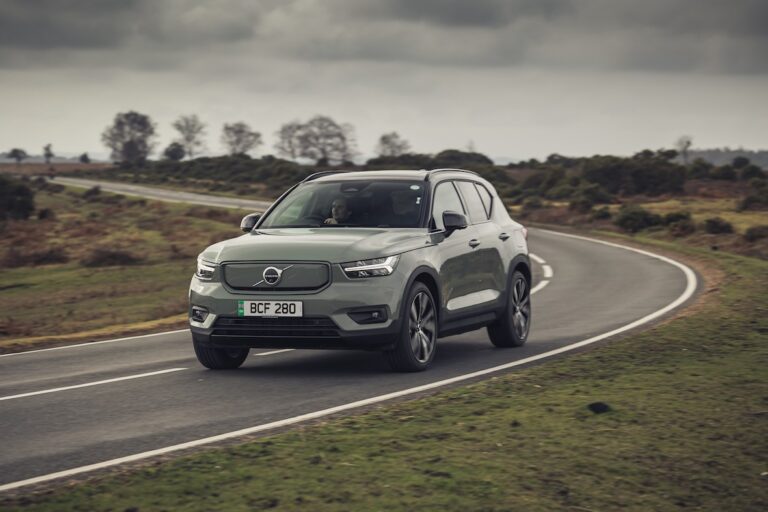Volvo has committed to electric power earlier than many others in the premium sector and is pushing forwards with its pure electric and plug-in hybrid models.
2022 will see a more powerful battery fitted into all its plug-in hybrids with an extended all-electric range, while this smaller XC40 brings plug-in hybrid and fully-electric motoring (the version tested here) to small SUV buyers.
VOLVO XC40 PURE ELECTRIC – DESIGN
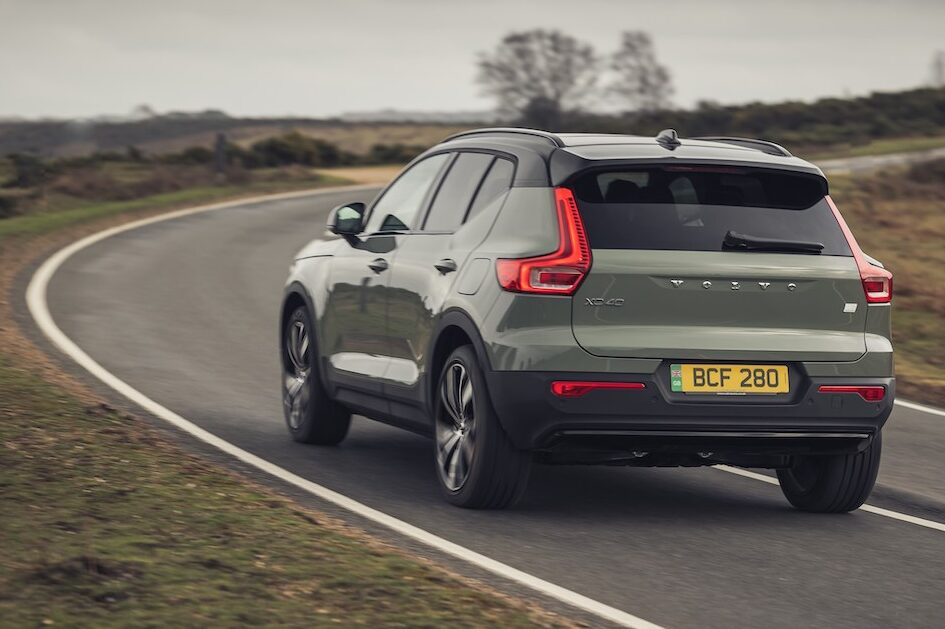
There’s no question that this Volvo XC40 is one of the best-looking small SUVs on the market today. Yes, there’s an inevitable family link between it and the larger XC60 and XC90 but to our eyes that’s no bad thing. The ‘Thor’s hammer’ LED front lights have now become an easily-recognisable signature for Volvo.
This fully electric version of the XC40 is differentiated by its petrol-powered stablemates by its solid front grille, which can at first make it look a little bluff-fronted, but we don’t mind. Likewise the rear where the kick-up behind the rear door doesn’t actually impede rearward vision as much as you might think.
VOLVO XC40 PURE ELECTRIC – POWER AND RANGE
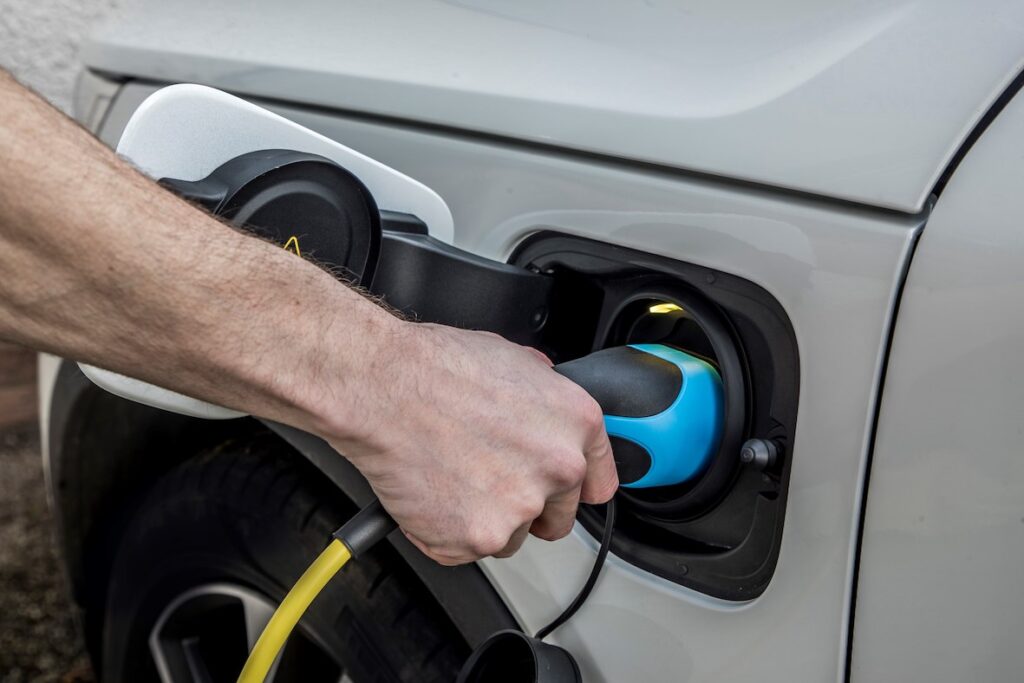
This fully electric version of the XC40 comes with a 78kWh battery producing the equivalent of 408bhp powering all four wheels. The official range is 256 miles with a claimed average power efficiency of 2.5-2.6mls/kWh which is quite power-hungry compared to the likes of the BMW iX3.
Unsurprisingly, given the XC40’s size and that power, performance isn’t exactly poor with an incredible 0 to 60mph time of just 4.7 seconds and a 122mph top speed. That’s fast enough to embarrass many supercars, let alone a family SUV, so it certainly has the power to take you by surprise – more on which later.
With an 11kW onboard charger, the XC40 can be recharged at a home wallbox in eight hours, while a 150kW rapid charger can achieve a zero to 80 per cent charge in just 40 minutes. Like all Volvo’s electrified models, the XC40 comes with both a Type 2 and three-pin domestic charging cables as standard.
VOLVO XC40 PURE ELECTRIC – ON THE ROAD

Despite its relatively small on-road footprint, the XC40 is certainly no lightweight tipping the scales at just over 2.1 tonnes.
Given that performance though, it is extremely rapid in a straight line and the throttle pedal has be used with a deal of circumspection. Making the same level of heavy inputs with your right foot such as when overtaking that you might in a normal car, can result in some unexpectedly violent acceleration. As we said earlier, it’s just not the level of speed that you might expect from a relatively conservative looking car like the XC40.
The same goes for the XC40’s regenerative braking levels too. Unlike most fully electric cars, in the XC40 there’s no way of adapting the strength of the regenerative braking, the only choice is a single control to switch the one pedal driving either on or off. And, frustratingly, that can only be done via the infotainment screen, so it’s not easy to switch on and off on the move.
With the one pedal switched off, the XC40 drives much like a normal car albeit with no engine braking to depend on when you lift off the throttle pedal. With it switched on however, that regenerative braking is extremely strong. There’s no doubt that you do get used to it, but the need to constantly put pressure on the throttle pedal can become tiring on longer journeys especially when cruising. An ability to tailor that level of regenerative braking as in most EVs would be preferable.
It’s shame as that’s undoubtedly the only weak point of the XC40’s on road manners. The ride quality could be a little better on broken surfaces, but it’s not so bad that it’s uncomfortable.
VOLVO XC40 PURE ELECTRIC – INTERIOR
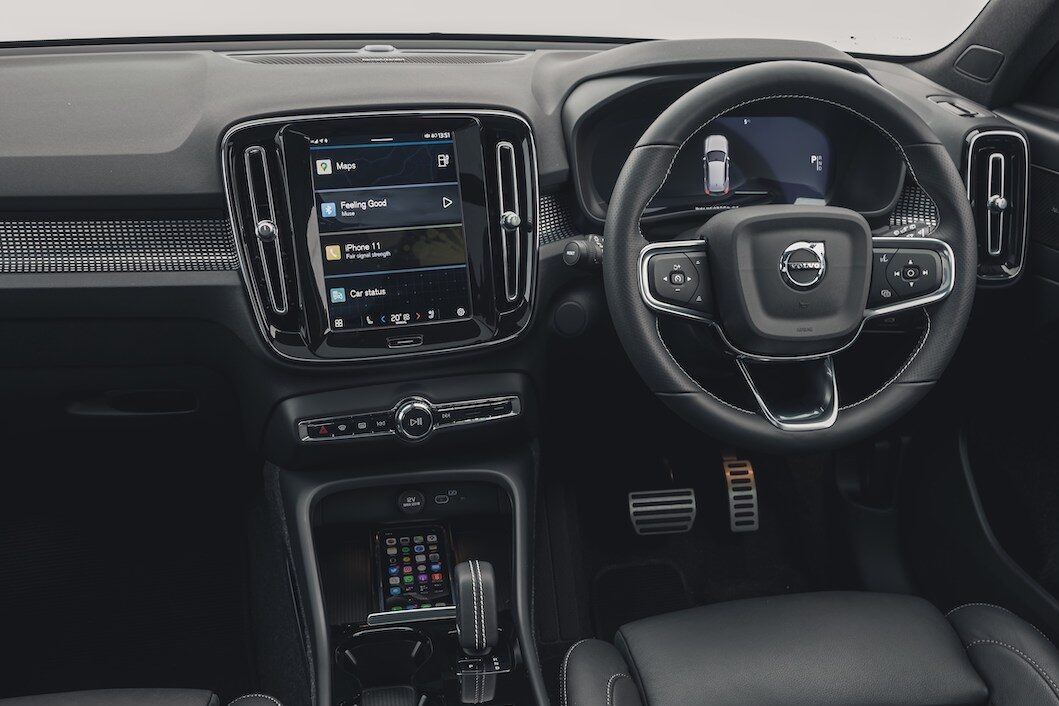
As with its exterior, the inside of the XC40 isn’t entirely unlike the rest of Volvo’s XC range. That’s no bad thing as the large portrait-style screen dominates the centre of the dashboard and there’s plenty of space in both front and rear seats. There are only the smaller USB C points in the cabin, so you’ll need a converter for the older, larger USB, but there’s lots of storage space and usefully big door pockets.
The panoramic roof lets lots of light in the cabin which adds to the light and airy feel, while there’s a decent sized boot (452 litres with the rear seats up and 1328 litres with them lowered) with a small underfloor well too.
One item obvious by its absence is the lack of a starter button. The keyless go technology simply recognises when the key is in the car and you can just slot the gear selector into Drive and off you go. It feels a little odd not to go through at least some form of starting process, but you do get used to it.
VOLVO XC40 PURE ELECTRIC – SUMMARY
There’s a lot to like about the Volvo XC40 Recharge Pure Electric. After all, it’s a good looking car inside and out, the build quality is excellent and there’s a good amount of practicality too.
However, while that was enough when introduced, it’s fast getting plenty of company at this level from the BMW iX3 and Jaguar I-Pace to the likes of the VW ID4 and Audi Q4 e-tron. That’s not to say that the Volvo can’t hold its head high alongside those rivals, but a price tag that starts not far off £50,000 brings with it certain expectations that include a longer range and a better rate of battery efficiency.
Add to that the lack of adjustable brake regeneration and, highly capable though the Volvo is, we can’t help but wonder whether it’s going to be enough longer term. With the premium all-electric market moving so quickly, good may no longer be quite good enough.
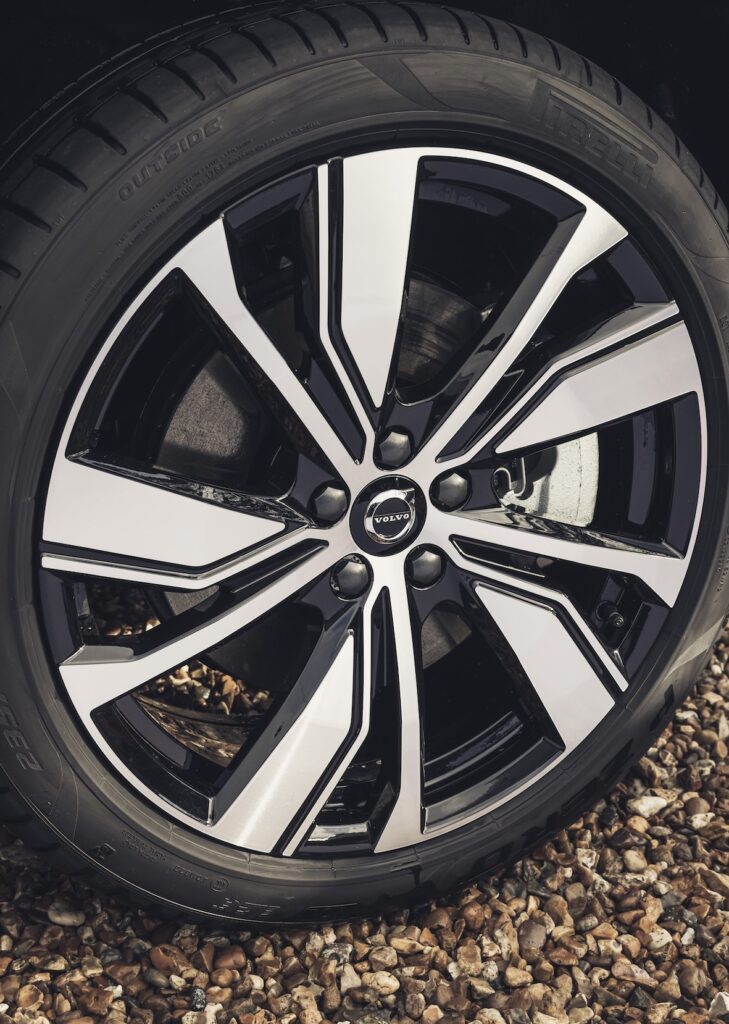
FACT BOX
Model: Volvo XC40 Recharge Pure Electric
Price: from £48,300
Power: Electric – 78kW
Range: 256 miles
Average consumption: 2.5mls/kWh
Average charge time on a domestic wallbox: 8hrs 30mins
CO2 emissions: 0g/km
Rating: 7/10

